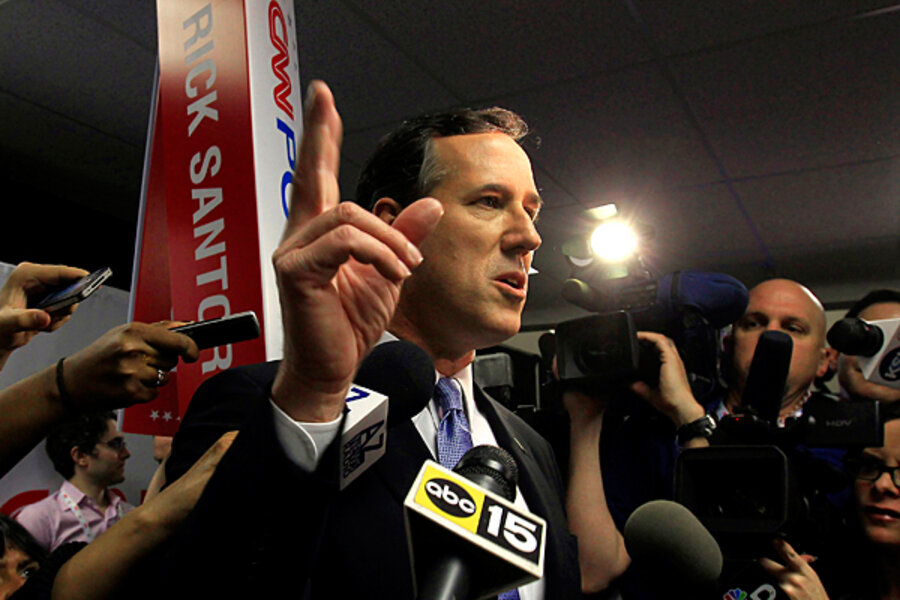Overview. The former US senator from Pennsylvania would cut taxes significantly compared with current US policy, while not specifying enough spending cuts to match. His income-tax overhaul would leave just two brackets, with rates of 10 or 28 percent. He would cut corporate taxes, raise the child tax credit, and eliminate the estate tax. He has called for cutting $5 trillion from federal spending within five years, but the CRFB report says he hasn't said how he'd hit that target.
The results. National debt would rise to 74 percent of GDP by 2021 under the "low-debt scenario" (which takes Mr. Santorum's own outlook for granted). That's an improvement compared with status quo policies, in which public debt rises to 85 percent of GDP by 2021.
But national debt under Santorum would jump to 104 percent of GDP in the "intermediate-debt scenario" that may be more realistic. This doesn't count spending cuts until Santorum gets more specific about his plans.
Why his plan gets there. Santorum's tax cuts would be exceeded in scale by his spending cuts, but only if he actually hits his ambitious targets on the spending side. He has proposed cutting nondefense discretionary spending to 2008 levels, but that nets a gain of just $120 billion, the CRFB says. Santorum also would reduce Medicare spending by shifting the program to a premium-support model. He would block-grant various social-welfare programs to the states and cap their growth.





